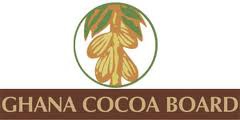
Ghana Cocoa Board (Cocobod) says it is confident of exceeding its cocoa production target of 850,000 metric tonnes in the ongoing season, due to good weather conditions.
“We can cross 850,000 metric tonnes this season. The weather has so far been good and other new farms have come onboard; we have some good cocoa coming from the Volta Region, too,” Dr. Stephen Kwabena Opuni, Chief Executive Officer, told B&FT in Accra.
He said Cocobod is also deploying a task-force to fight the smuggling of beans to Ivory Coast, the number-one producer, where prices paid to farmers are higher due to Ghana’s weak currency.
This country, the second-biggest producer, runs a two-cycle cocoa season consisting of the October-June main crop harvest which is mainly exported, and the July-September light crop that is discounted to local grinders.
The current 2013/14 main crop season opened on October 18 with an initial target of buying around 830,000 tonnes. Dr. Opuni declined to say how much beans have been purchased so far by Cocobod. The country produced 835,410 tonnes of cocoa during the 2012/13 crop year, down 5 percent on the previous season.
An unprecedented one million tonnes of cocoa was produced during the 2010/11 crop-year thanks to good weather and improved farming techniques -- but production declined to about 850,000 tonnes in the 2011/12 season.
Government has kept faith with farmers by ensuring that they receive at least 70 percent of the Free on Board cocoa price. But amid falling prices of the crop in the past two seasons, the actual price received by farmers per tonne has increased by just 3.4 percent since the 2012/13 season.
Ghanaian farmers currently produce 400 kg/ha, which is far below the productivity of farmers in Ivory Coast and Indonesia, who produce 600 kg/ha and 1000kg/ha respectively.
Cocobod has expressed worry over rising production costs over the years as it worked to raise cocoa output from a previous 400,000 tonnes per annum to about 900,000 tonnes at present.
The cocoa regulator said inputs such as planting materials and chemicals have seen their costs rise, and spending on infrastructure in cocoa communities has increased.
“Our cost is rising even as we continue to sustain our production target of between 800,000 tonnes and over 900,000 tonnes annually through sustainable input supply systems like planting materials, chemicals to control pests and disease, improved infrastructure at some cocoa-growing centres, and also sustainable income for farmers,” the board said.
Cocoa has gained 3.1 percent in London this year and was trading at £1,729 on Monday. Ghana and Ivory Coast account for about 70 percent of global supplies. Other big producers are Indonesia, Brazil and Ecuador.